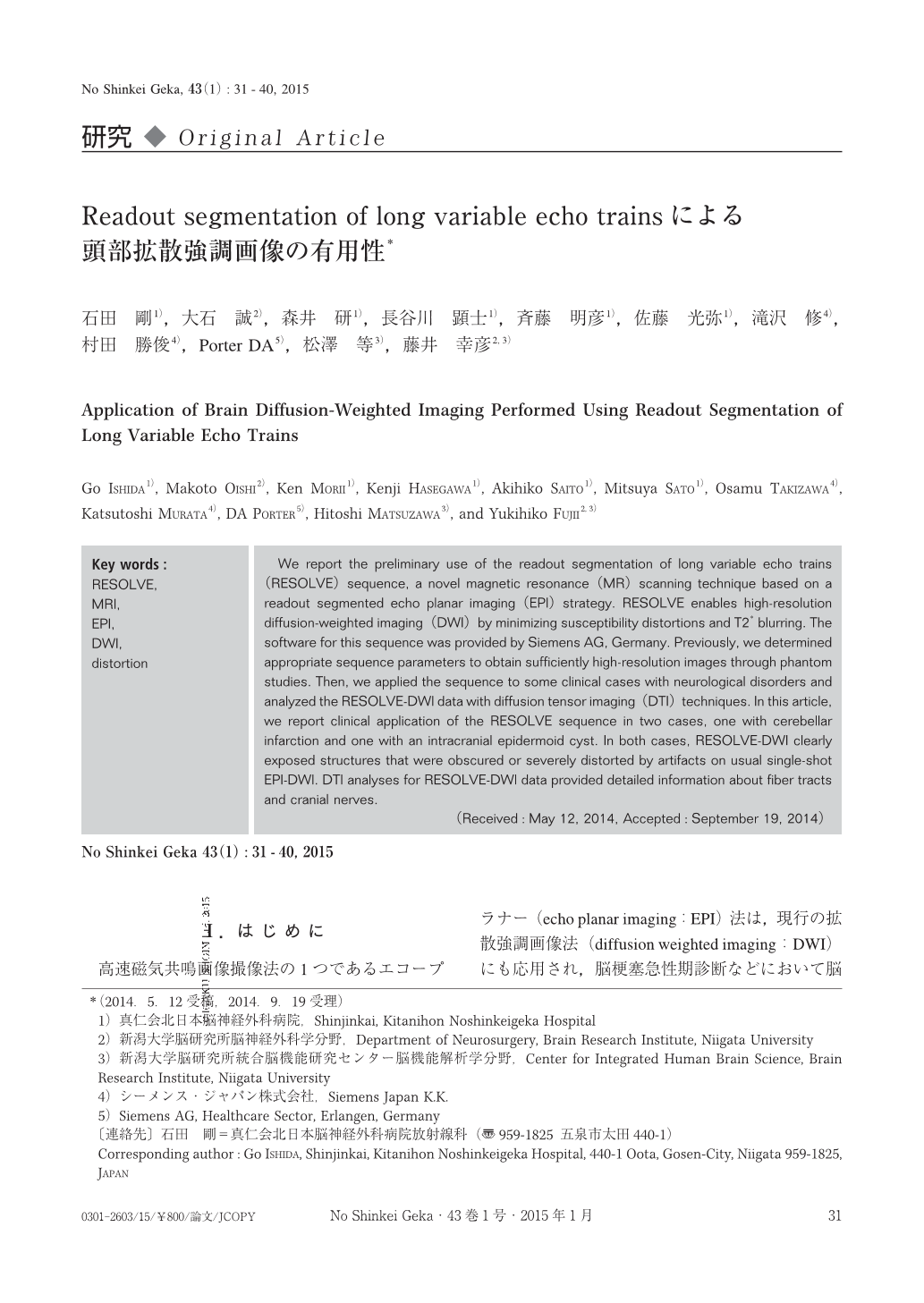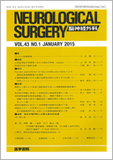Japanese
English
- 有料閲覧
- Abstract 文献概要
- 1ページ目 Look Inside
- 参考文献 Reference
Ⅰ.はじめに
高速磁気共鳴画像撮像法の1つであるエコープラナー(echo planar imaging:EPI)法は,現行の拡散強調画像法(diffusion weighted imaging:DWI)にも応用され,脳梗塞急性期診断などにおいて脳神経外科臨床には必要不可欠な撮像法となっている.しかし,EPI法は磁化率効果に鋭敏で,義歯や副鼻腔などの頭蓋骨内の空気の影響による磁化率アーチファクト,すなわち,画像の歪みなどが頭蓋底部では強く出現する可能性があり,診断に支障を及ぼすことも少なくない.最近では,その磁化率アーチファクトの軽減のために,臨床DWI画像に主に使用されるsingle shot EPI(従来EPI)法では,種々の改良がなされているが,3.0 tesla(3.0T)のような高磁場システムでは,磁化率アーチファクトの影響は1.5Tより強く,画像歪み補正に関しては十分とは言えない.そこで登場したのが,readout segmentation of long variable echo trains(RESOLVE)法である.RESOLVE法はEPI法の1つであるが,従来EPI法とは異なり,データ収集(周波数方向)の分割によりエコー時間を短縮し,これによって生じる信号低下などの問題となる位相誤差を補正するためにナビゲーションエコーを使用し,画像の歪みなどに関係する磁化率アーチファクトの大幅な減少を可能とした7,12,13).本研究では,この新しい高速撮像法であるRESOLVE法の基礎検討を行い,RESOLVE-DWI画像の臨床的有用性について検討した.
We report the preliminary use of the readout segmentation of long variable echo trains(RESOLVE)sequence, a novel magnetic resonance(MR)scanning technique based on a readout segmented echo planar imaging(EPI)strategy. RESOLVE enables high-resolution diffusion-weighted imaging(DWI)by minimizing susceptibility distortions and T2* blurring. The software for this sequence was provided by Siemens AG, Germany. Previously, we determined appropriate sequence parameters to obtain sufficiently high-resolution images through phantom studies. Then, we applied the sequence to some clinical cases with neurological disorders and analyzed the RESOLVE-DWI data with diffusion tensor imaging(DTI)techniques. In this article, we report clinical application of the RESOLVE sequence in two cases, one with cerebellar infarction and one with an intracranial epidermoid cyst. In both cases, RESOLVE-DWI clearly exposed structures that were obscured or severely distorted by artifacts on usual single-shot EPI-DWI. DTI analyses for RESOLVE-DWI data provided detailed information about fiber tracts and cranial nerves.

Copyright © 2015, Igaku-Shoin Ltd. All rights reserved.


